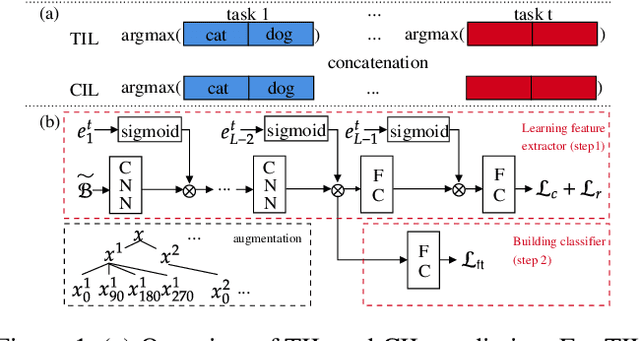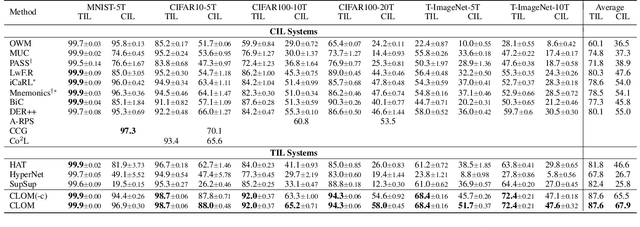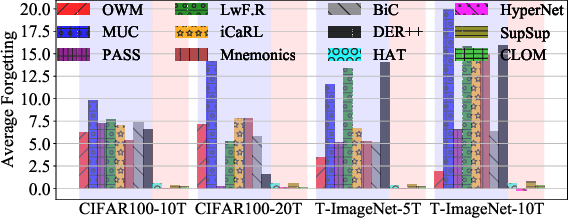Gyuhak Kim
Harnessing Business and Media Insights with Large Language Models
Jun 02, 2024

Abstract:This paper introduces Fortune Analytics Language Model (FALM). FALM empowers users with direct access to comprehensive business analysis, including market trends, company performance metrics, and expert insights. Unlike generic LLMs, FALM leverages a curated knowledge base built from professional journalism, enabling it to deliver precise and in-depth answers to intricate business questions. Users can further leverage natural language queries to directly visualize financial data, generating insightful charts and graphs to understand trends across diverse business sectors clearly. FALM fosters user trust and ensures output accuracy through three novel methods: 1) Time-aware reasoning guarantees accurate event registration and prioritizes recent updates. 2) Thematic trend analysis explicitly examines topic evolution over time, providing insights into emerging business landscapes. 3) Content referencing and task decomposition enhance answer fidelity and data visualization accuracy. We conduct both automated and human evaluations, demonstrating FALM's significant performance improvements over baseline methods while prioritizing responsible AI practices. These benchmarks establish FALM as a cutting-edge LLM in the business and media domains, with exceptional accuracy and trustworthiness.
Parameter-Level Soft-Masking for Continual Learning
Jun 26, 2023Abstract:Existing research on task incremental learning in continual learning has primarily focused on preventing catastrophic forgetting (CF). Although several techniques have achieved learning with no CF, they attain it by letting each task monopolize a sub-network in a shared network, which seriously limits knowledge transfer (KT) and causes over-consumption of the network capacity, i.e., as more tasks are learned, the performance deteriorates. The goal of this paper is threefold: (1) overcoming CF, (2) encouraging KT, and (3) tackling the capacity problem. A novel technique (called SPG) is proposed that soft-masks (partially blocks) parameter updating in training based on the importance of each parameter to old tasks. Each task still uses the full network, i.e., no monopoly of any part of the network by any task, which enables maximum KT and reduction in capacity usage. To our knowledge, this is the first work that soft-masks a model at the parameter-level for continual learning. Extensive experiments demonstrate the effectiveness of SPG in achieving all three objectives. More notably, it attains significant transfer of knowledge not only among similar tasks (with shared knowledge) but also among dissimilar tasks (with little shared knowledge) while mitigating CF.
Learnability and Algorithm for Continual Learning
Jun 22, 2023Abstract:This paper studies the challenging continual learning (CL) setting of Class Incremental Learning (CIL). CIL learns a sequence of tasks consisting of disjoint sets of concepts or classes. At any time, a single model is built that can be applied to predict/classify test instances of any classes learned thus far without providing any task related information for each test instance. Although many techniques have been proposed for CIL, they are mostly empirical. It has been shown recently that a strong CIL system needs a strong within-task prediction (WP) and a strong out-of-distribution (OOD) detection for each task. However, it is still not known whether CIL is actually learnable. This paper shows that CIL is learnable. Based on the theory, a new CIL algorithm is also proposed. Experimental results demonstrate its effectiveness.
Open-World Continual Learning: Unifying Novelty Detection and Continual Learning
Apr 20, 2023Abstract:As AI agents are increasingly used in the real open world with unknowns or novelties, they need the ability to (1) recognize objects that (i) they have learned and (ii) detect items that they have not seen or learned before, and (2) learn the new items incrementally to become more and more knowledgeable and powerful. (1) is called novelty detection or out-of-distribution (OOD) detection and (2) is called class incremental learning (CIL), which is a setting of continual learning (CL). In existing research, OOD detection and CIL are regarded as two completely different problems. This paper theoretically proves that OOD detection actually is necessary for CIL. We first show that CIL can be decomposed into two sub-problems: within-task prediction (WP) and task-id prediction (TP). We then prove that TP is correlated with OOD detection. The key theoretical result is that regardless of whether WP and OOD detection (or TP) are defined explicitly or implicitly by a CIL algorithm, good WP and good OOD detection are necessary and sufficient conditions for good CIL, which unifies novelty or OOD detection and continual learning (CIL, in particular). A good CIL algorithm based on our theory can naturally be used in open world learning, which is able to perform both novelty/OOD detection and continual learning. Based on the theoretical result, new CIL methods are also designed, which outperform strong baselines in terms of CIL accuracy and its continual OOD detection by a large margin.
Continual Learning of Language Models
Feb 10, 2023Abstract:Language models (LMs) have been instrumental for the rapid advance of natural language processing. This paper studies continual learning of LMs, in particular, continual domain-adaptive pre-training (or continual DAP-training). Existing research has shown that further pre-training an LM using a domain corpus to adapt the LM to the domain can improve the end-task performance in the domain. This paper proposes a novel method to continually DAP-train an LM with a sequence of unlabeled domain corpora to adapt the LM to these domains to improve their end-task performances. The key novelty of our method is a soft-masking mechanism that directly controls the update to the LM. A novel proxy is also proposed to preserve the general knowledge in the original LM. Additionally, it contrasts the representations of the previously learned domain knowledge (including the general knowledge in the pre-trained LM) and the knowledge from the current full network to achieve knowledge integration. The method not only overcomes catastrophic forgetting, but also achieves knowledge transfer to improve end-task performances. Empirical evaluation demonstrates the effectiveness of the proposed method.
A Theoretical Study on Solving Continual Learning
Nov 04, 2022Abstract:Continual learning (CL) learns a sequence of tasks incrementally. There are two popular CL settings, class incremental learning (CIL) and task incremental learning (TIL). A major challenge of CL is catastrophic forgetting (CF). While a number of techniques are already available to effectively overcome CF for TIL, CIL remains to be highly challenging. So far, little theoretical study has been done to provide a principled guidance on how to solve the CIL problem. This paper performs such a study. It first shows that probabilistically, the CIL problem can be decomposed into two sub-problems: Within-task Prediction (WP) and Task-id Prediction (TP). It further proves that TP is correlated with out-of-distribution (OOD) detection, which connects CIL and OOD detection. The key conclusion of this study is that regardless of whether WP and TP or OOD detection are defined explicitly or implicitly by a CIL algorithm, good WP and good TP or OOD detection are necessary and sufficient for good CIL performances. Additionally, TIL is simply WP. Based on the theoretical result, new CIL methods are also designed, which outperform strong baselines in both CIL and TIL settings by a large margin.
A Multi-Head Model for Continual Learning via Out-of-Distribution Replay
Aug 20, 2022



Abstract:This paper studies class incremental learning (CIL) of continual learning (CL). Many approaches have been proposed to deal with catastrophic forgetting (CF) in CIL. Most methods incrementally construct a single classifier for all classes of all tasks in a single head network. To prevent CF, a popular approach is to memorize a small number of samples from previous tasks and replay them during training of the new task. However, this approach still suffers from serious CF as the parameters learned for previous tasks are updated or adjusted with only the limited number of saved samples in the memory. This paper proposes an entirely different approach that builds a separate classifier (head) for each task (called a multi-head model) using a transformer network, called MORE. Instead of using the saved samples in memory to update the network for previous tasks/classes in the existing approach, MORE leverages the saved samples to build a task specific classifier (adding a new classification head) without updating the network learned for previous tasks/classes. The model for the new task in MORE is trained to learn the classes of the task and also to detect samples that are not from the same data distribution (i.e., out-of-distribution (OOD)) of the task. This enables the classifier for the task to which the test instance belongs to produce a high score for the correct class and the classifiers of other tasks to produce low scores because the test instance is not from the data distributions of these classifiers. Experimental results show that MORE outperforms state-of-the-art baselines and is also naturally capable of performing OOD detection in the continual learning setting.
Continual Learning Based on OOD Detection and Task Masking
Mar 17, 2022



Abstract:Existing continual learning techniques focus on either task incremental learning (TIL) or class incremental learning (CIL) problem, but not both. CIL and TIL differ mainly in that the task-id is provided for each test sample during testing for TIL, but not provided for CIL. Continual learning methods intended for one problem have limitations on the other problem. This paper proposes a novel unified approach based on out-of-distribution (OOD) detection and task masking, called CLOM, to solve both problems. The key novelty is that each task is trained as an OOD detection model rather than a traditional supervised learning model, and a task mask is trained to protect each task to prevent forgetting. Our evaluation shows that CLOM outperforms existing state-of-the-art baselines by large margins. The average TIL/CIL accuracy of CLOM over six experiments is 87.6/67.9% while that of the best baselines is only 82.4/55.0%.
 Add to Chrome
Add to Chrome Add to Firefox
Add to Firefox Add to Edge
Add to Edge